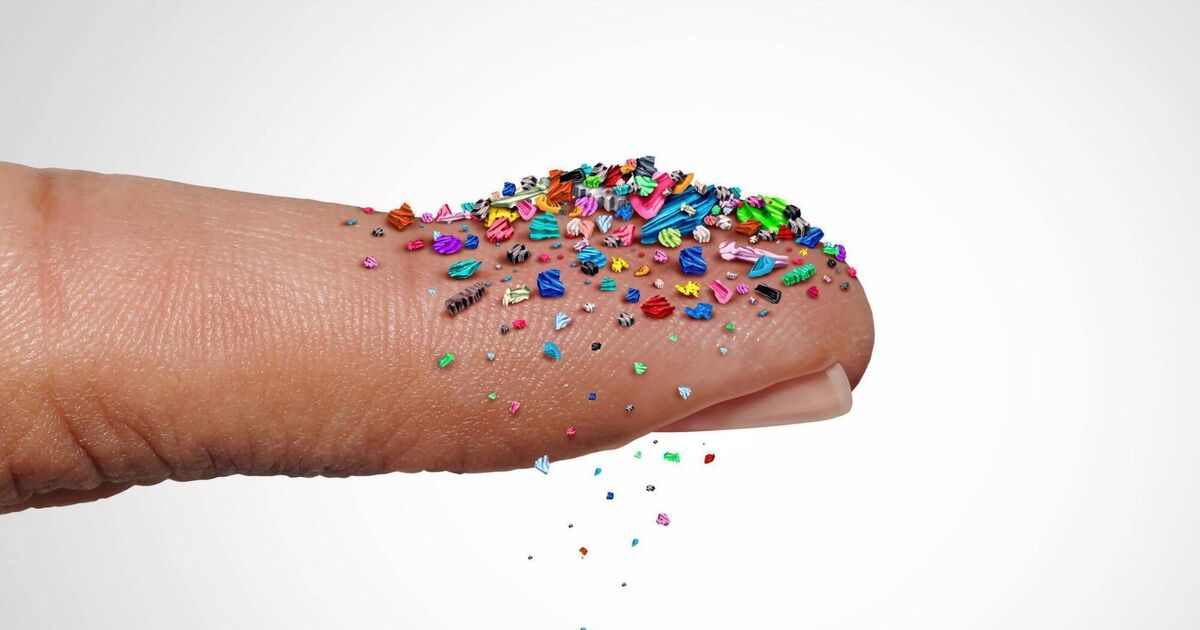MICROPLASTICS – tiny particles that are manufactured or broken down from larger plastic objects — are everywhere. Less than 5mm in size, these synthetic nano-fragments find their way into the air, soil, food, and water supplies, where we breathe in and ingest them, so our own bodies do not escape contamination.
John Boland, professor of chemistry and materials science researcher at Trinity College Dublin, says the average person’s brain contains around 5g of microplastics.
“What is quite clear is that they are everywhere,” he says. “The scary stuff is that any baby born in the developing world now, their meconium, or first baby poo, contains microplastics, and a typical pregnant female has microplastics in her amniotic fluid [the protective liquid that surrounds a foetus in the womb].”
As a relatively new material, plastics comprise long chains of carbon, called polymers, mixed in with chemical additives, such as plasticisers and dyes. Microplastic particles are so small that they are often not large enough to be seen by the human eye.
“A human hair is 50 microns [one millionth of a metre] and it takes 20 hairs to make a millimetre,” Boland says. “Your typical microplastic is less than one micron and the smaller they are, the nastier they are because they can get into all kinds of different places in your body.”
 John Boland, professor of chemistry and materials science researcher at Trinity College Dublin
John Boland, professor of chemistry and materials science researcher at Trinity College Dublin
It sounds sci-fi-level scary, and it’s no surprise that they have become the latest target of the wellness brigade, with celebrities seeking out costly therapies to expel microplastics from their bodies.
Pictures emerged recently of the Lord of the Rings and Pirates of the Caribbean star Orlando Bloom, 48, hooked up to a machine at a London clinic that purports to remove microplastics from the blood.
During the two-hour plasma exchange (or apheresis) treatment — which costs an eye-watering €11,000 — blood is extracted and the plasma cleansed of a range of so-called forever chemicals, including microplastics, before being put back into the body with the red blood cells.
Experts are sceptical about whether it works or is necessary to remove microplastics. For starters, they accumulate not just in our blood or in our serum but in most tissues of our body.
“The minute particles like to nestle in the body next to lipids and proteins where they get stuck and are difficult to dislodge,” Boland says.
“They are very tricky, very sticky, and the ability to expel them from your body is very limited, and any serum processing techniques will likely not remove them from other tissues in the body.”
Even if microplastic detoxing is frowned upon, experts are increasingly concerned that our use of plastic products over the last 50 years means our exposure to particles is greater than ever.
Last year, a team of Italian scientists reporting in the New England Journal of Medicine found microplastics were present in the plaque of arteries in more than half of the 257 patients waiting for surgery.
“When the cardiac surgeons removed plaque from the arteries of these patients, they found that several per cent of the plaque by weight was made up of microplastics,” Boland says.
Another paper in the journal Nature Medicine, published this year, found that microplastic concentration in brain and liver tissue samples was higher for those who died in 2024 than those in 2016.
The scientists also looked at brain tissue samples from people who had died between 1997 and 2013 on the east coast of the USA. They found a growing trend in microplastic contamination.
How do microplastics get into our bodies?
Our exposure to plastic residues has increased in line with our increased use of plastic as a material in the last few decades.
“The degradation of plastic waste is one way that plastics break down and get into water, soil, and plants, then into the food chain,” says Boland. “But there is also a direct release of microplastics from the materials used to cook and prepare food.”
Most plastic bottles, sandwich boxes, kettles and other containers used for food cooking and storage are polypropylene-based, and when heated or exposed to warm water, can start to degrade.
“We have found the higher the temperature of the water, the larger the number of microplastics and chemical additives released,” Boland says. “We need to raise awareness that cooking with plastics is problematic.”
Plastics are also found in the air.
“Every time your car slams on the brakes, you make powdered dust that gets into the atmosphere and your lungs,” Boland says. “It’s a problem of such a scale that it requires real engagement of countries across the globe to try to solve the problem.”
What are the implications for health?
As our use of plastics has increased, so has the incidence of heart disease, inflammatory bowel disease, and other conditions.
Poor lifestyle habits, such as ultra-processed food and declining levels of activity, play a role in these diseases, and while lab studies have shown that microplastic accumulation causes inflammation in human and animal cells, much of this remains speculation.
“The jury is out,” Boland says. “What we do know is that there are accumulations [in the body] and there are associations with health, but what we don’t have is a link to causation.”
In 2020, the World Health Organisation confirmed there was not enough evidence to determine if consuming or inhaling microplastics posed a risk to human health, but it did concede research was needed to “address current uncertainties”.
We breathe them in, but can we sweat them out?
Plastic micro-particles can cross the gut and get into the bloodstream and the lymph glands. There, the particles could be degrading, so there might be very small amounts or larger chunks left. Our bodies have evolved to keep harmful substances out as much as possible.
“Some are generally processed and pass out again through the urine and faeces,” says Tamara Galloway, professor of ecotoxicology at the University of Exeter’s department of biosciences in Britain and a leading researcher on microplastics.
“It is perfectly possible that the tiniest pieces could also be sweated out through sweat glands in the body.”
How do we reduce our exposure?
Polyethylene (PE), used for making disposable food packaging, is the most common polymer found in plastic litter and, in a Nature Medicine study published this year, was found to be present in human brain tissue.
Reducing the use of single-use plastic food containers and packaging is one way of doing it. That includes putting a biodegradable lid on your takeaway coffee, using natural fibres for bedding and clothing, and avoiding laundry beads.
A study in the Proceedings of the National Academy of Sciences last year by Columbia University scientists found that a litre of bottled water contained approximately 240,000 tiny pieces of plastic.
“Almost everywhere you look, there is plastic,” Boland says.
“We can’t avoid them altogether, but greater awareness of using less in daily life is important.”
